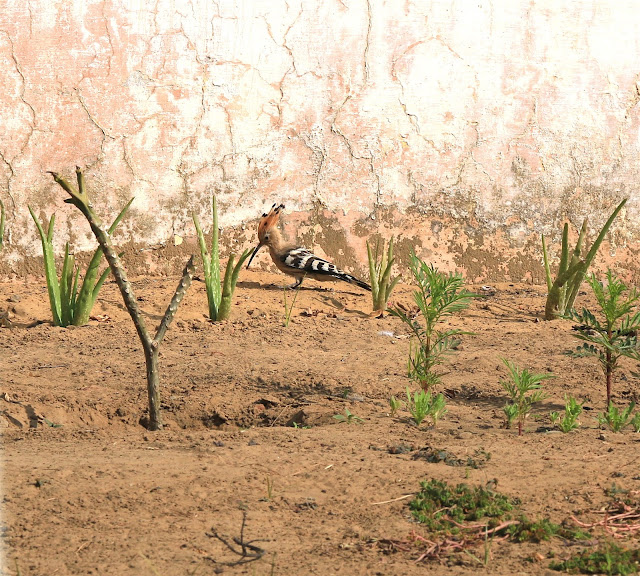Hoopoe in Jaipur
On a cold winter morning, I spotted a Hoopoe in my garden. I happened to look at the zebra wings, laid out like a fan on the ground. It got up to forage on the insects and then laid down again. It was basking sun.
The beak was sharp and hooked, almost like that of the woodpecker. I noticed that it only foraged near the vegetable garden near my lawn. It kept knocking its beak in the soil, the action reminding of a woodpecker.
The beak was sharp and hooked, almost like that of the woodpecker. I noticed that it only foraged near the vegetable garden near my lawn. It kept knocking its beak in the soil, the action reminding of a woodpecker.
It was later that I came to know of the Hoopoe species.
The Hoopoe has distinctive crown of feathers. From it's 'Upupidae' family, the hoopoe is the only existing species today, all of the rest are extinct. Hoopoes generally forage on insects and seeds.
The hoopoe is widespread in Europe, Asia, and North Africa, Sub-Saharan Africa and Madagascar. They have been seen at high altitudes during migration across the Himalayas. One was recorded at about 6,400 m (21,000 ft) by the first Mount Everest expedition.
Hoopoes were seen as a symbol of virtue in Persia. They were considered sacred in Ancient Egypt, and were "depicted on the walls of tombs and temples".
Islamic literature states that a hoopoe saved Moses and the children of Israel from being crushed by the giant Og after crossing the Red Sea.
Islamic literature states that a hoopoe saved Moses and the children of Israel from being crushed by the giant Og after crossing the Red Sea.
In Morocco, hoopoes are traded live and as medicinal products in the markets, primarily in herbalist shops.





Comments
Post a Comment